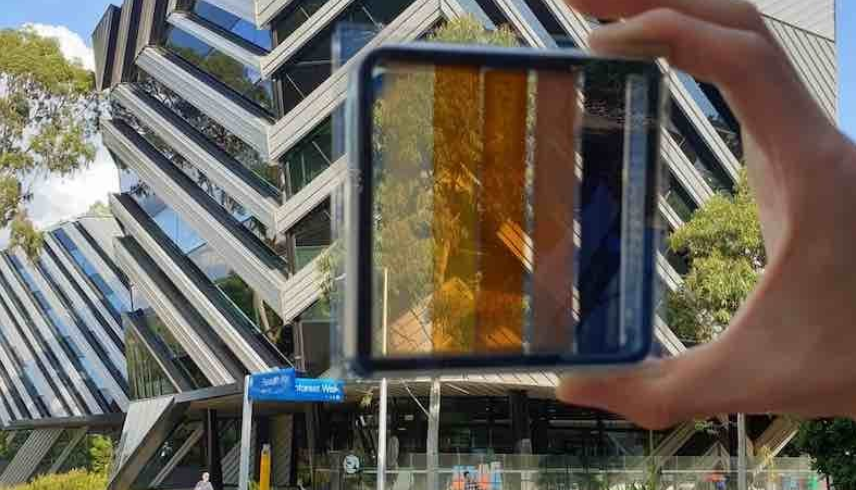Australian researchers are teaming up with one of Australia’s largest glass manufacturers to test the use of “game-changing” semi-transparent solar cells to transform windows into active power generators.

The research team – led by Professor Jacek Jasieniak from the ARC Centre of Excellence in Exciton Science (Exciton Science) and Monash University – say their next-gen perovskite solar cells technology can generate electricity while allowing light to pass through.
The quest to develop “solar windows” is not new, and various window-integrated PV technologies do already exist – such as the transparent solar technology of ASX-listed company ClearVue – but usually at a very low energy conversion rate.
Other attempts at semi-transparent solar window designs have failed, the research team explain in a paper in the May edition of the journal Nano Energy, because they were very expensive, unstable or inefficient.
This technology, however, backed by funding from the Australian Renewable Energy Agency, has used an organic semiconductor that can be made into a polymer, as a substitute for a more commonly used, but less stable component.
This has had the “astonishing” result of giving the semi-transparent solar cells a conversion efficiency on par with regular rooftop solar panels, at around 17 per cent, while still allowing through more than 10 per cent of the incoming light.
“It’s long been a dream to have windows that generate electricity, and now that looks possible,” said Professor Jasieniak, who worked alongside colleagues from Monash’s Materials Science and Engineering Department and the CSIRO.
Professor Jasieniak notes that his team’s solar cells can be made more transparent, but at a cost to conversion efficiency. “The more transparent they are, the less electricity they generate, so that becomes something for architects to consider,” he said.
Solar windows tinted to the same degree as current glazed commercial windows, for example, would generate about 140W of electricity per square metre.
The team says the next step is to work on scaling up the manufacturing process, which is where Australian glass manufacturer Viridian comes in.
“We’ll be looking to develop a large-scale glass manufacturing process that can be easily transferred to industry so manufacturers can readily uptake the technology,” said research co-author and CSIRO research scientist, Dr Anthony Chesman.
The first application is likely to be in multistorey buildings, where the team says the additional cost of incorporating their semi-transparent solar cells into high-rise windows will be marginal.
“But even with the extra spend, the building then gets its electricity free!” Professor Jasieniak said.
“These solar cells mean a big change to the way we think about buildings and the way they function. Up until now every building has been designed on the assumption that windows are fundamentally passive. Now they will actively produce electricity.
“Planners and designers might have to even reconsider how they position buildings on sites, to optimise how the walls catch the sun.”